Mystery grows after Jaguar spotted on a trail camera in Arizona – the 8th sighting in the past 25 years of the animal rarely spotted in the US
A new jaguar has been spotted in southern Arizona, only the eighth spotted in the southwestern US since 1996. according to conservationists.
Jason Miller, a hobbyist wildlife videographer, captured the elusive predator on December 20 with his trail camera in the Huachuca Mountains. A camera captured the animal around 8:27 p.m. when movement was detected at the bottom of the image.
“Five years ago I started taking wildlife cameras here in southern Arizona, hoping that one day I might get a jaguar,” Miller said in a video of the encounter that he posted on YouTube.
The Arizona Game and Fish Department has verified Miller's stunning footage and confirmed it is a new jaguar spotted in the US.
Sightings of Jaguars are rare in the US, as they have only been recorded in parts of Arizona, California, Louisiana, New Mexico and Texas, after being extirpated from the country in the mid-20th century due to hunting and habitat loss. AZ Central reported.
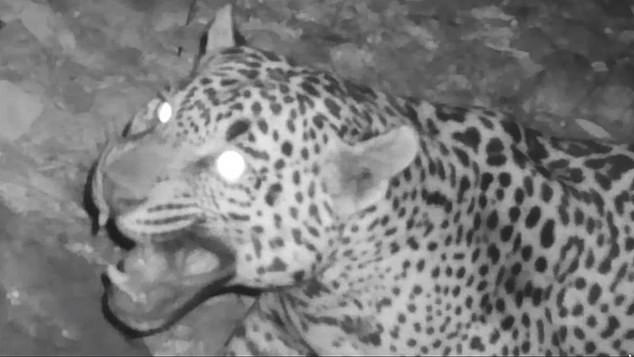
A new jaguar was spotted in southern Arizona after hobbyist photographer Jason Miller captured the wild cat on camera on December 20.
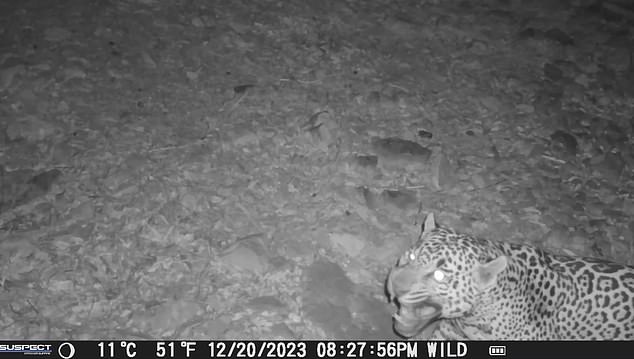

The animal's sex is unknown, but Russ McSpadden, a southwestern conservation advocate at the Center for Biological Diversity, has predicted it is a male based on its wandering patterns.
The feral cats were officially protected under the Endangered Species Act in 1977.
Jaguars originally originated in North America before moving to Central and South America.
The U.S. Fish and Wildlife Service has designated approximately 750,000 acres of important protected habitat for the jaguars along the southern Arizona-New Mexico border.
Authorities say Arizona jaguars are part of the species' northern population, which includes Sonora, Mexico's breeding population.
The animal can be spotted by its unique spots, like those of human fingerprints, and compared to other animals detected in the United States, this is the first time this animal has emerged.
“I'm confident this is a new jaguar, previously unknown in the United States,” said Russ McSpadden, southwestern conservation advocate at the Center for Biological Diversity.
“After being nearly wiped out, these majestic felines continue to recover previously occupied territory despite the construction of border walls, new mines and other threats to their habitat.”
The new video has confirmed that the cat is not Sombra or El Jefe, two jaguars known to have roamed Arizona in recent years, as Jaguar spots are unique to the specific animal.
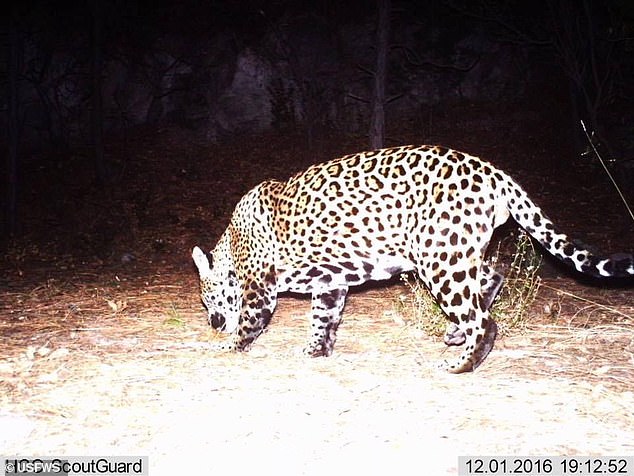

The new video has confirmed that the cat is not Sombra or El Jefe, two jaguars known to have roamed Arizona in recent years. Pictured: a jaguar spotted in Arizona in 2016
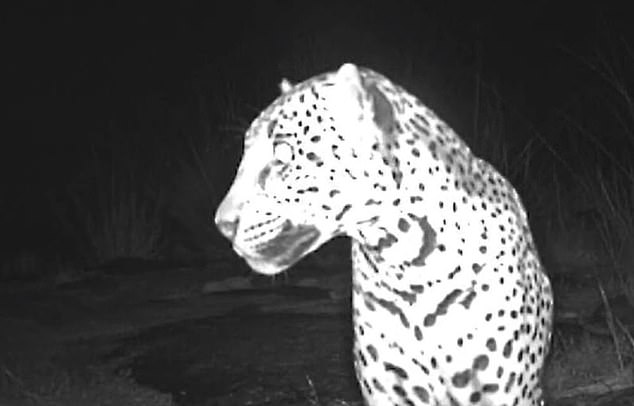

A jaguar was also spotted in Arizona in 2012. There have only been about eight confirmed sightings in the US in the last 25 years.
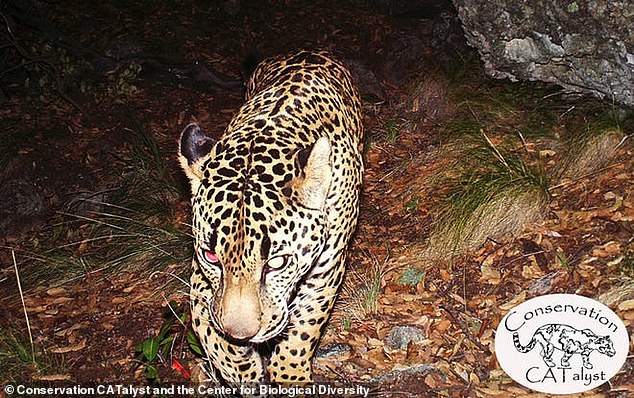

A 2015 photo provided by Conservation CATalyst and the Center for Biological Diversity shows the jaguar known as El Jefe, in the Santa Rita Mountains south of Tucson, Arizona
Prior to the latest sighting, a third jaguar was also seen in the same mountains in 2016 and was named Yo'oko, but was killed by a farmer in 2018 after crossing into Sonara, California.
Sombra is believed to still roam the US and has been photographed several times in the Chiricahua Mountains since 2016.
It is unclear where El Jefe, who is also known as “The Boss,” was last seen in 2022, more than 100 miles south of Mexico.
Although the sex of the new jaguar is unclear, McSpadden predicted it was a male based on its wandering behavior.
In 2023, an unidentified male jaguar was also detected wandering near the border in southern Arizona and captured by Customs and Border Patrol.
McSpadden said, “It's possible this is the same mysterious jaguar.”
Female jaguars have not been spotted in the US since 1949 and are known to stick close to their native territories, while males travel freely, roaming hundreds of miles.
“It's evidence that jaguars are tenacious and moving north, and they continue to reestablish their territory here,” Mcspadden said.
'It is also promising because they are doing so despite many threats. There is a border wall, there is habitat loss, there are new mines, roads and other development.”
